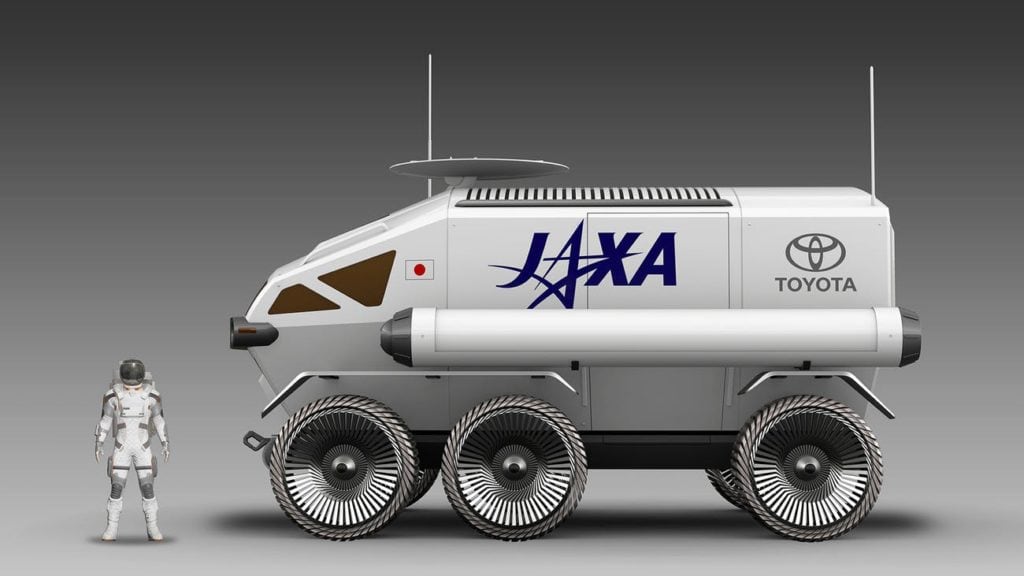
Toyota is developing future vehicles to be used on the surface of the Moon for future lunar missions. These vehicles will be powered by new fuel cells in order to increase the power and performance of the new rovers.
For the development of lunar craft, Toyota is working with the Japan Aerospace Exploration Agency, as Karen Graham earlier reported for Digital Journal. The first vehicle to be developed will be a vehicle that will be driven by an astronaut and powered by fuel cells.
The idea of the all-terrain vehicle was first mooted in May 2018. The vehicle will have a pressurized cabin of a size of 13 square meters, enabling anywhere between two to four astronauts to travel within the craft without the need for spacesuits.
The vehicle will be around six-meters on length. As well as having the capability to be driven by the lead astronaut, the craft will also have the functionality to be controlled remotely, making it the first ever autonomous lunar vehicle (assuming that the concept reaches the lunar surface).
The use of fuel cells overcomes the weight limitations which affect the size of payloads that can be sent to the Moon, as well as boosting efficiency overall. The fuel cell propulsion system, will provide a total range of over 10,000 kilometers.
The fuel cells are part of Toyota’s clean energy initiative. The car company is developing major key components for hydrogen-based mobility. These are fuel cell stacks and hydrogen tanks. For this Toyota is building a new, eight-storey building for the production of fuel cell stacks close to its Honsha plant in Toyota City. The facility will manufacture the required components that convert hydrogen into electrical energy.
Toyota intends to also use the technology to develop fuel cells for its more traditional Earth-bound vehicles. With the model Mirai, Toyota is already offering consumers the world’s first fuel cell sedan.
Commenting on the collaboration, Japan Aerospace Exploration Agency President Hiroshi Yamakawa is quoted by Smart2Zero, stating: “At JAXA, we support international coordination and technological studies on Japan’s participation in international space exploration.”
He adds: “Our goal is to contribute and create potential benefits through leading Japanese technologies. The fact that Toyota is joining us in international space research strengthens our confidence enormously. Pressurized manned rovers play an important role in the full exploration and exploitation of the lunar surface.”
If the future lunar mission is successful, Toyota hope that the technology can be developed and a similar vehicle developed for a future human visit to Mars.
